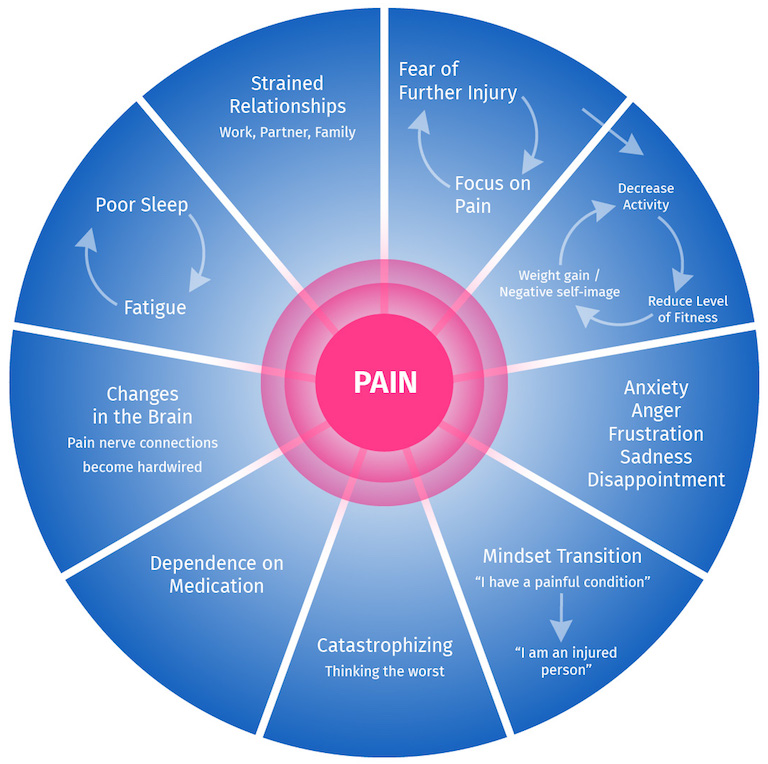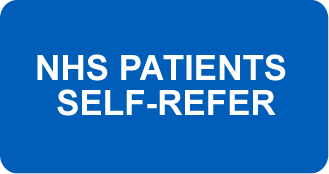Week 4: Social aspects of pain & sleep

- Activities of daily living: Living with chronic pain can be stressful. Managing your activities of daily living at home, work, with friends and family as well as many other things can be difficult. You may not feel that you have no control over the pain and don’t feel able to cope with it.
- Anxiety with diagnosis: Experiencing pain can lead to feelings of anxiety or fear about the cause of the pain, especially where there is no obvious cause. You may feel like damage is being done to your body and you may feel some concern about what the pain might mean – what damage could have been done and what the future might hold.
- Relationship with friends and family: Feeling pain can also make you feel anxious, especially if you expect the pain to come back or get worse. You may feel easily angered and hostile towards people who don’t understand your situation or how your pain affects you. Some people even feel anger towards the pain itself. This could have an effect on the relationship with your friends and family.
- Environmental stressors: When things aren’t going so well it can lead to feeling bad tempered, anxious, frustrated and having troubling thoughts. You may feel hopeless and very down about feeling this pain, which can result in depression.
- Social support and isolatio: From research we know that lack of social support and isolation could lead to increase in pain and vice versa. However, over social support may compromise self-sufficiency. Persistent pain could also lead to isolation and furthermore isolation makes increases the pain. Social relationships may enhance pain coping, directly through social support and/or indirectly through enhancing other factors that improve resilience to pain through enjoyable or positive interpersonal exchanges.
- Social expectation: Our expectations can influence pain, and even contribute to how people respond to pain-killing drugs. For some, the sound of a dentist’s drill or even just the thought of it is enough to heighten expectations of pain. People pain responds differently to coloured medications that to a white one.
- Cultural factors: There is reported relationship between pain and ethnicity that is shaped by experience, learning and culture. However, mistaken beliefs about the nature of pain and disability, resistance to treatment seeking, reluctance to comply with treatment and failure to accept responsibility of the treatment outcome are not culturally or sub-culturally specific obstacles to pain management. A cultural group's expectations and acceptance of pain as a normal part of life will determine whether pain is seen as a clinical problem that requires a clinical solution.
- Medicolegal and insurance issue: Injury is a common cause for disability and musculoskeletal injuries commonly associated with compensation systems for road traffic accidents and also work place incidents. It has been widely reported that compensation affects the physical function and legal representation affects their psychological function. When you worry about the compensation or legal claims the chances of your recovery from your persistent pain becomes less favourable and leads to poor health.
- Previous treatment experiences: Patients develop cognitive and emotional representations of their condition and beliefs about possible treatments. This guides their treatment selection and potential improvement with the treatment received. It also sometimes give them unrealistic expectations out their treatment plans.
- Work history: Increased work strain, physical demand from work, lack of social support at work and work related disputes can also increase the level of pain experienced by people. When you surfer with persistent pain it is important that you discuss with your employer and to improve your health and safety at work.
- Social environment and communication: You may sometimes lose your confidence, finding it hard to express your needs. If you don't express your needs clearly, that could increase your tension and also your pain. So it's important to communicate well and to be assertive. You can do this by following the simple tips given below:
- Be firm and say what you mean
- Try not to complain, plead or be apologetic
- Don't shout or raise your voice, keep it calm and low
- Make sure your message is clear, rather than expecting people to guess what you're getting at
- Don't tell people what to do, but explain to them why you're asking them to do something
- Ask for help when you need it
- When you're asking for something, say 'I want' instead of 'I need' and 'I don't want' instead of 'I cannot'
- Be precise and to the point - don't beat about the bush!
- It’s ok to change your mind and to say ‘no’ without feeling guilty - you’re in control.
Sleep: Those with persistent pain often find that they have problems sleeping. You might find it difficult to get off to sleep, or find that you wake up during the night because of your pain. Unfortunately, the more you try to sleep, the harder it sometimes becomes. This can increase your stress levels, which can make the pain worse, which, in turn, makes it more difficult to sleep. So, it's like a vicious circle. If this sounds familiar, try following the advice below:
- Try not to nap during the day, no matter how tired you feel - do something else instead
- Avoid tea, coffee, alcohol and cigarettes for 4 hours before you go to bed
- Wait until you feel tired before you go to bed
- Be aware of the messages you give yourself about bedtime - don't go to bed expecting not to sleep!
- Try to go to bed at the same time each night
- Do not read, eat or watch TV in bed
- Make sure that your bed is comfortable - use pillows to support your legs and back
- Use relaxation and breathing exercises in bed
- If you can't get off to sleep, get up and do something, such as reading or relaxation
- exercises
- Get up at the same time every morning, regardless of how much you slept during the night - set your alarm clock if you need to
- Remember – a good short sleep is better than tossing and turning all night.
|
Download:
|



